Verbena bonariensis: a must-have garden perennial but sometimes considered an invasive weed. Learn more here before adding this self-seeder to your garden so you’re prepared! This article includes planting and seasonal care info plus plenty of photos. I love this easy-care plant!
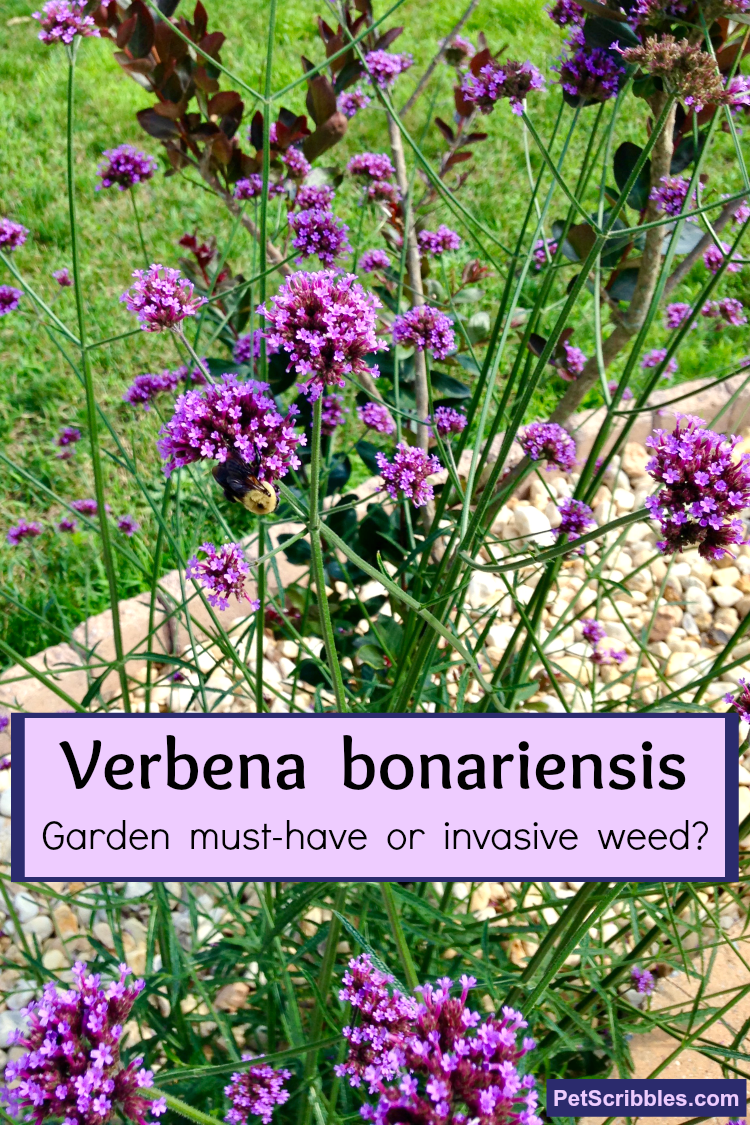
I can’t believe I haven’t yet blogged about Verbena bonariensis – being that I’ve written this blog post so many times in my head! This is one of my favorite flowers!
Table of Contents
- Why Verbena bonariensis is a perennial garden must-have!
- This is NOT the annual version of Verbena!
- There are several perennial varieties of Verbena too!
- Verbena bonariensis easy-care facts
- About seedlings
- So. Is Verbena bonariensis an invasive weed?
- Verbena is easy to grow from seed
- Can you transplant Verbena bonariensis?
- Do you have to cut back Verbena bonariensis?
- Dwarf varieties of Verbena bonariensis
- Verbena bonariensis in my gardens
- Where to buy plants and seeds
Why Verbena bonariensis is a perennial garden must-have!
- Long-blooming: blooms begin in Summer and last far into the Fall season.
- Strong: the flowers are held on sturdy stems that sway in the wind but don’t break.
- Hardy: easily withstands rainstorms as well as scorching Summer sun.
- Easy-care: this plant can handle the occasional drought and has no special needs.
- Reseeds easily: a reliable plant that returns each year, sometimes in surprise places too.
- Purple color: I describe it as an orchid shade with dark purple undertones and hints of magenta.
- Tall: Verbena can grow to around 6 feet in height. It looks good up close and also from a distance.
- Airy: Although tall, this plant has thin stems and sparse leaves so it never blocks other plants in the garden.
- Great as cut flowers: lasts a long time in a vase and looks good as it is drying too.
- Attracts pollinators: bees and butterflies (including Monarchs) love the flowers.
- Winter interest: The dried flowers provide height and texture in the Winter plus food for birds.
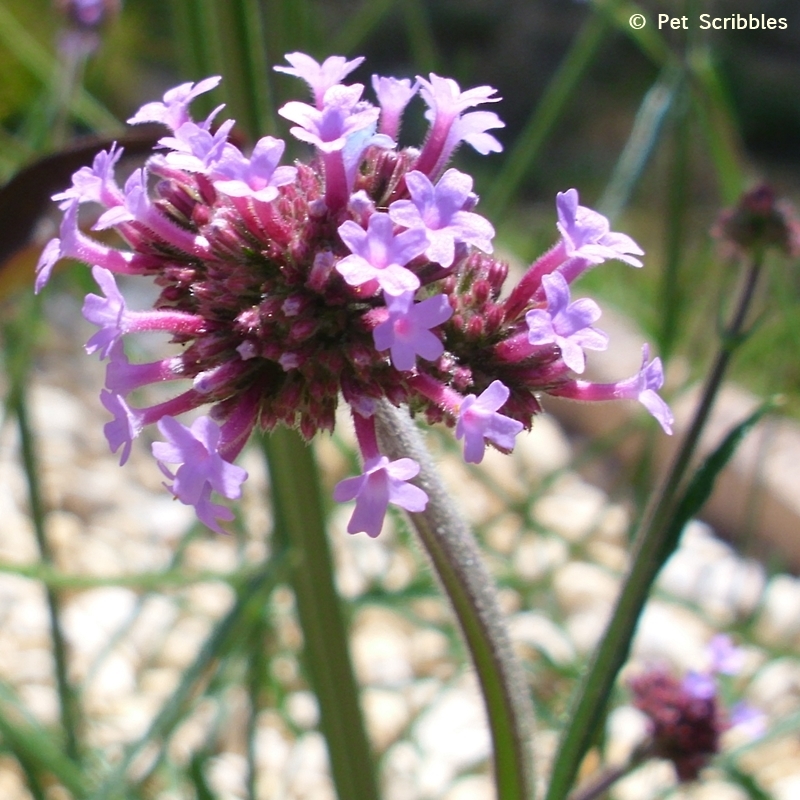
This is NOT the annual version of Verbena!
I’ve seen quite a few blog posts that incorrectly identify Verbena bonariensis as an annual, so just be mindful that you’re purchasing the correct version.
The annual version of Verbena is a low growing (approx. 6 to 10 inches tall), flowering plant with a spreading or mounding habit. Annual verbena is usually planted in the front of gardens or in containers and hanging baskets.
Annual Verbena comes in many colors including white and purple as seen in this hanging basket, courtesy of Proven Winners:
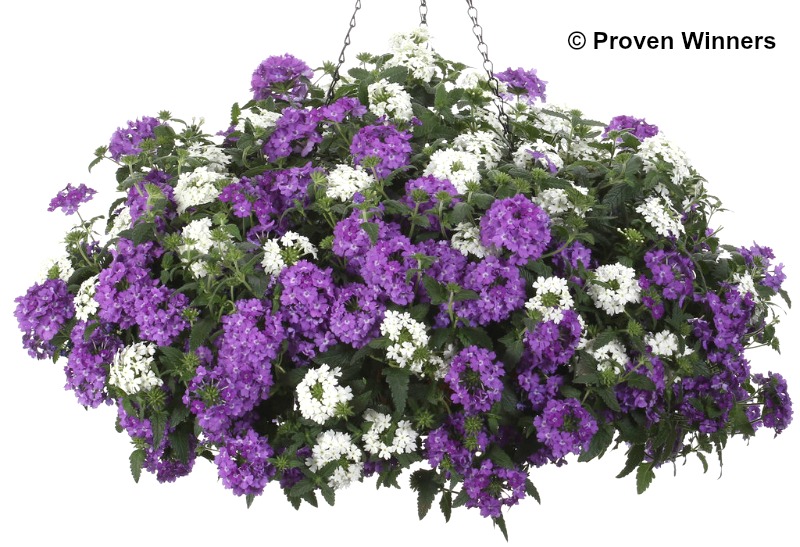
There are several perennial varieties of Verbena too!
To make it more confusing, there are many perennial varieties of Verbena that look similar to the annual versions. These come in many colors including pink, magenta and purple.
One of my favorites is Verbena canadensis Apple Blossom, also called Vervain. (Ever notice that plants always have more than one name?)
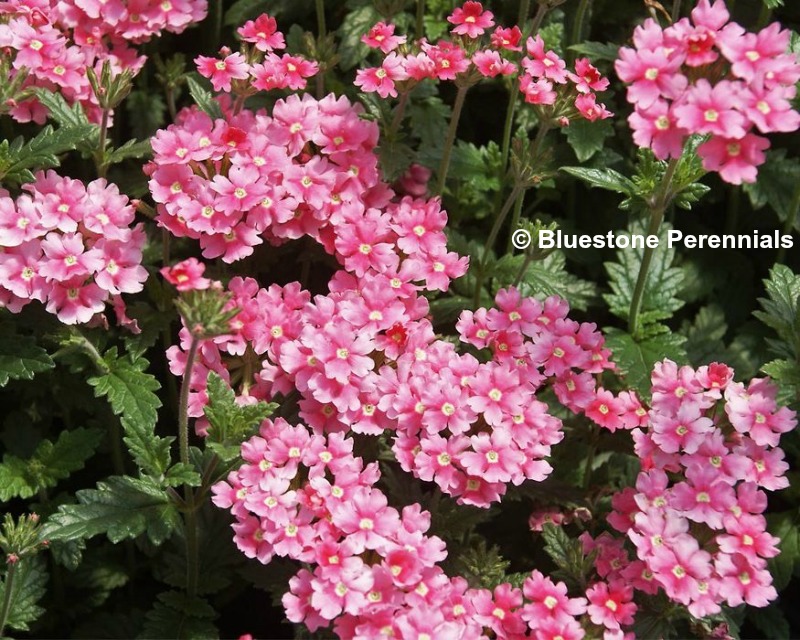
Apple Blossom is a short plant that loves to spread and looks great either in garden beds or in containers.
Verbena bonariensis
Verbena bonariensis is also a perennial verbena, and the focus of this article. This plant is native to South America — in fact its specific name is for Buenos Aires, Argentina. Verbena bonariensis is also commonly known as Tall Verbena or Purpletop Vervain. (Again, multiple names to remember!)
Verbena bonariensis easy-care facts
Each tall stem of Verbena bonariensis shoots up from a leafy base. The dark green stems are stiff with sparse leaves, while the tiny individual purple flowers are clustered together looking like one flower head. Average flower head size is 2 to 3 inches in diameter.
Here is a good look at the colors I think best describe these flowers: an orchid shade with hints of magenta and dark purple:
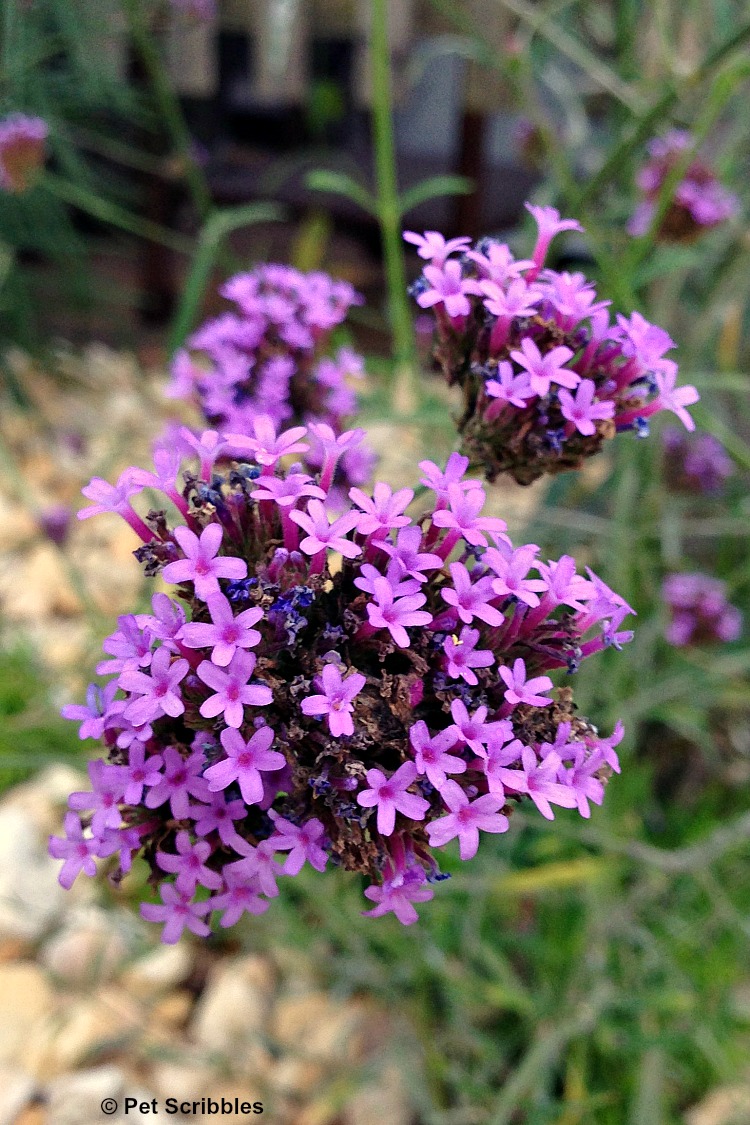
- Full sun to partial sun
- Each flower stalk grows between 3 and 6 feet tall
- Verbena bonariensis needs full sun to achieve full height
- Fast growing
- Blooms Summer into late Fall
- USDA Zones 7 to 11
- Treated as an annual in northern zones
- Well-drained soil is fine; handles occasional drought
- Deer and rabbit resistant
Helpful to know: If you’re planting Verbena bonariensis outside of zones 7 to 11, it may or may not survive the Winter. However, since this plant reseeds easily, you might be surprised with a new batch of plants each year!
About seedlings . . .
As I mentioned above, Verbena readily reseeds, with each flower producing several seeds. The original plants might not survive your Winter season but seedlings will often pop up in their place.
Many times you’ll have a verbena seedling also show up in an unexpected spot in another part of your yard or garden. This is because Verbena’s seeds can be carried by the wind, as well as carried by birds and/or butterflies which adore this plant.
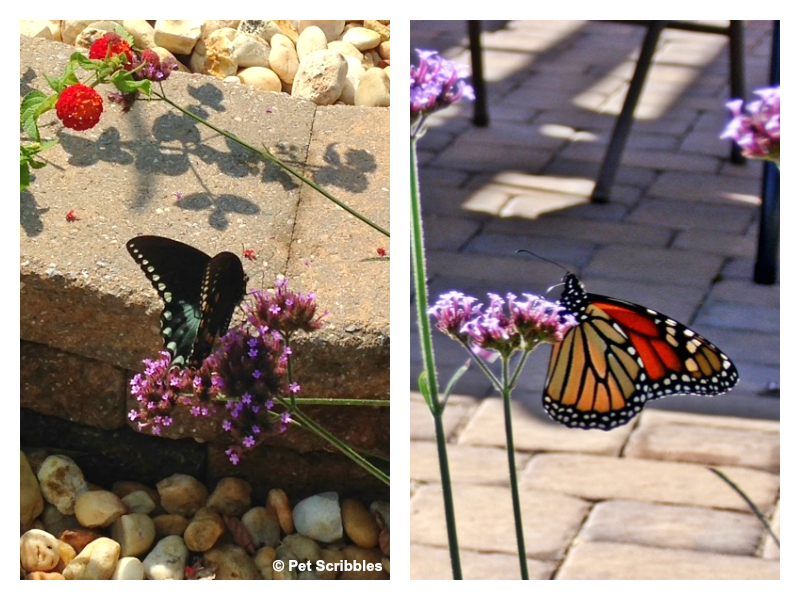
After awhile you’ll easily recognize the seedlings.
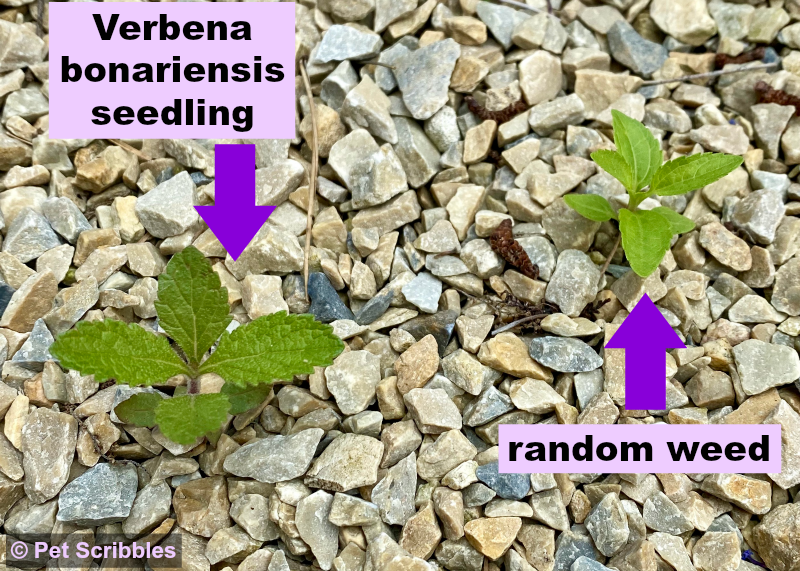
You can either pull them out, keep them there, or replant in another location.
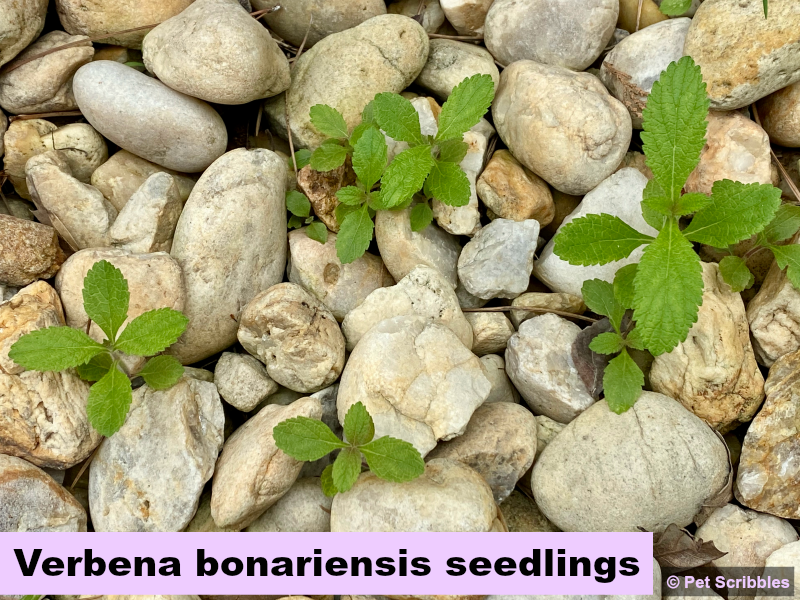
If you’re going to replant a seedling, wait until it has a few sets of leaves on it to transplant, so there’s not so much shock to the plant. Small seedlings of verbena transplant easily.
Most self-seeders give gardeners an easy time, as the plants can be depended upon to come back every year without effort.
I’ve seen this plant referred to as a *happy accident* when it pops up in random places in the garden.
Everyone has an opinion: Some love Verbena bonariensis and can’t get enough like me, while others hate it because of how well it reseeds.
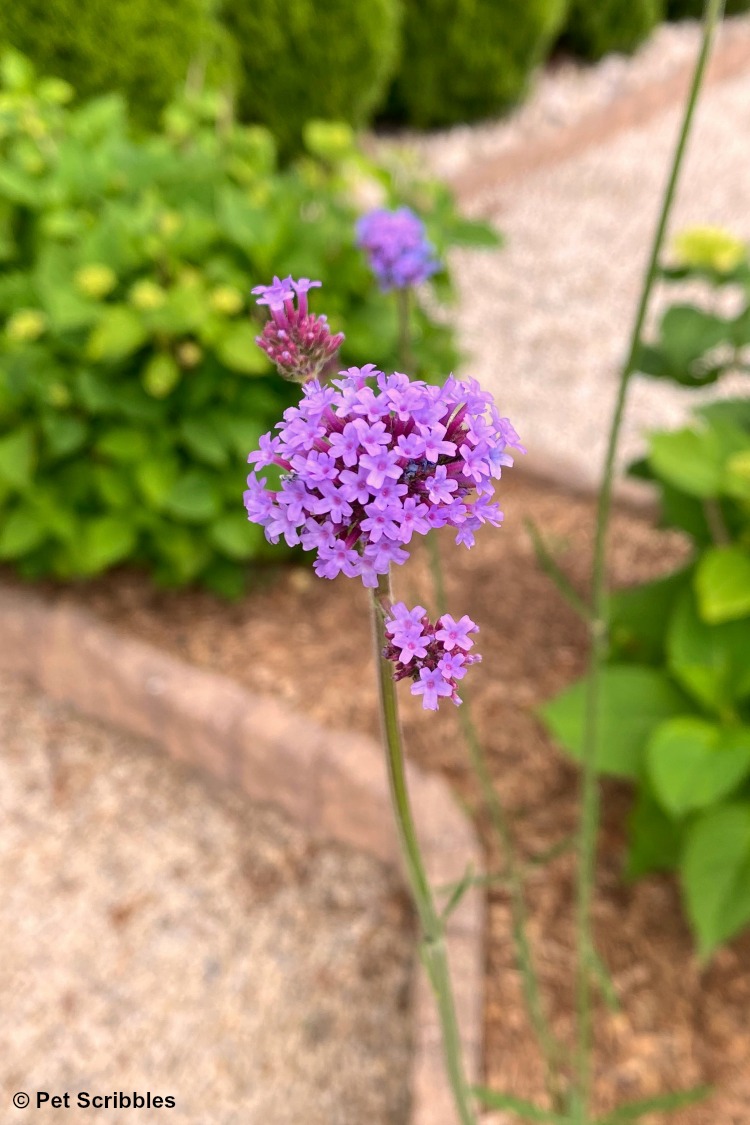
Example of leaving seedlings in place to grow
Here’s a patch of Verbena that unexpectedly began growing among our rocks in our patio bed, in between a small Crepe Myrtle tree and a tiny Blue Star Juniper shrub.
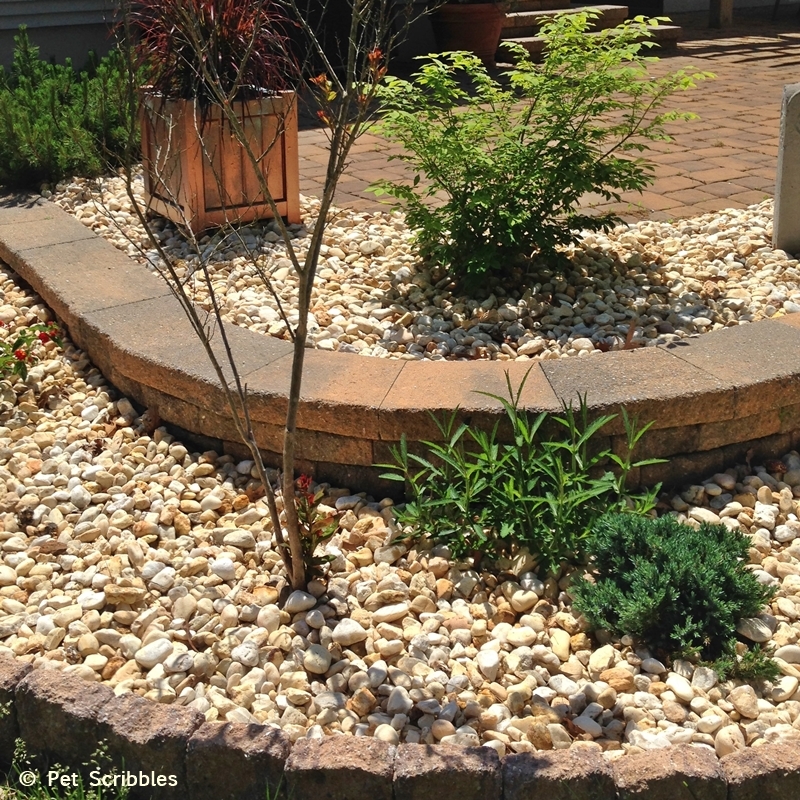
I decided to leave it, and am so glad I did.
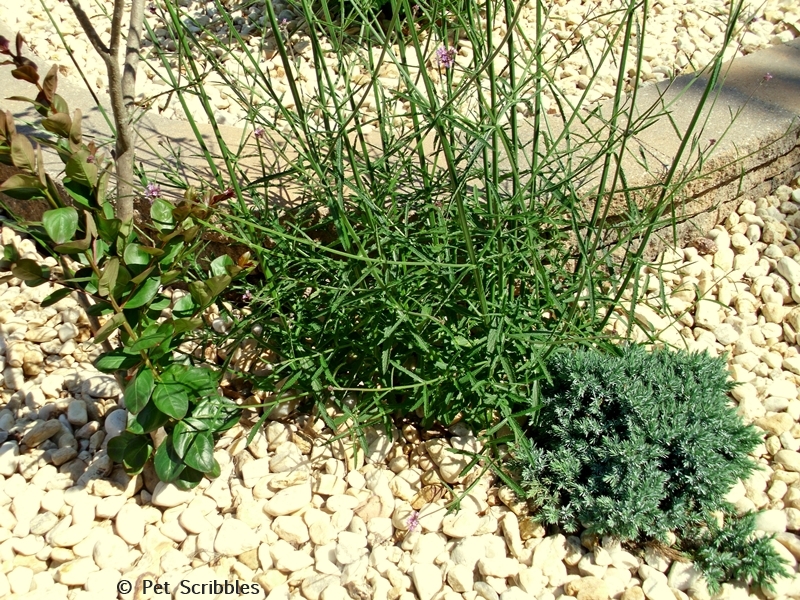
The Crepe Myrtle tree barely survived that year’s brutal Winter season, and the Verbena filled in around it nicely.
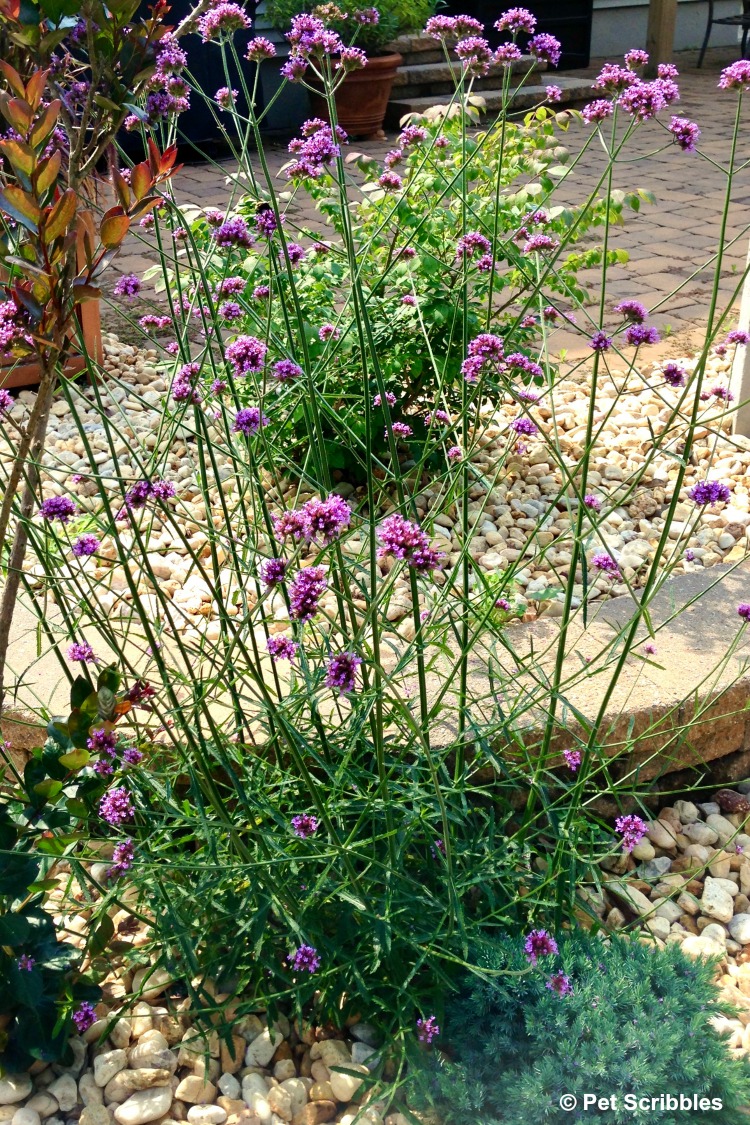
So. Is Verbena bonariensis an invasive weed?
Yes and no.
Because Verbena bonariensis is not a native plant in the United States, and it has become naturalized in certain states, this gives it the classification of being invasive in those states.
Becoming *invasive* means Verbena has escaped from gardens and become naturalized — found on roadsides, growing in meadows and so on.
The good news so far? Research shows this plant has not replaced or smothered other native species nor does it harm livestock if eaten.

Several states have Verbena bonariensis on their watch lists for invasive plants, including Georgia, California, Oregon, Washington state and Texas. This means they are keeping an eye on this plant, that if not currently invasive, it could be in the future.
(Australia and South Africa also consider this perennial to be invasive.)
In addition, some southern US states have a similar plant on their invasive species lists called Verbena brasiliensis. This is not the same plant as Verbena bonariensis.
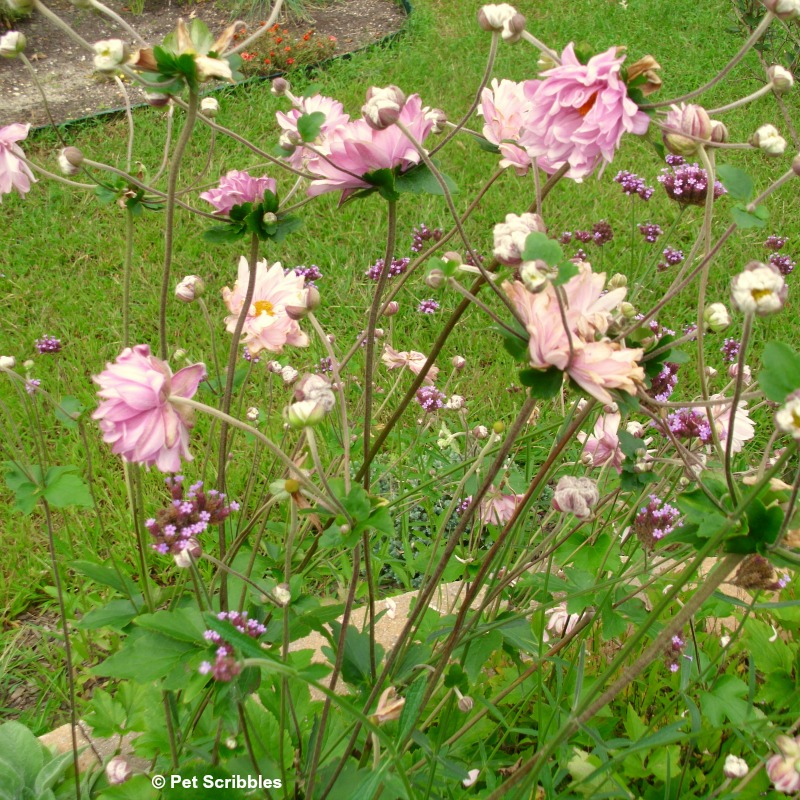
This article from The Guardian quotes Leigh Hunt, from the Royal Horticultural Society, saying the following:
And finally, what of the “invasive” reputation? Hunt is philosophical about it. “A self-seeder is invasive only if you can’t control it. If you can, then you have an incredibly useful plant that fills up gaps and brings a sense of change and interest to a garden.”
Gardens: self-seeders | The Guardian
I like the way she thinks! And it’s true: We love the plants that we want in our gardens, right? We welcome those plants spreading freely about, or at least within the boundaries we set up for them. If those plants overwhelm us, our love begins to get tainted with irritation.
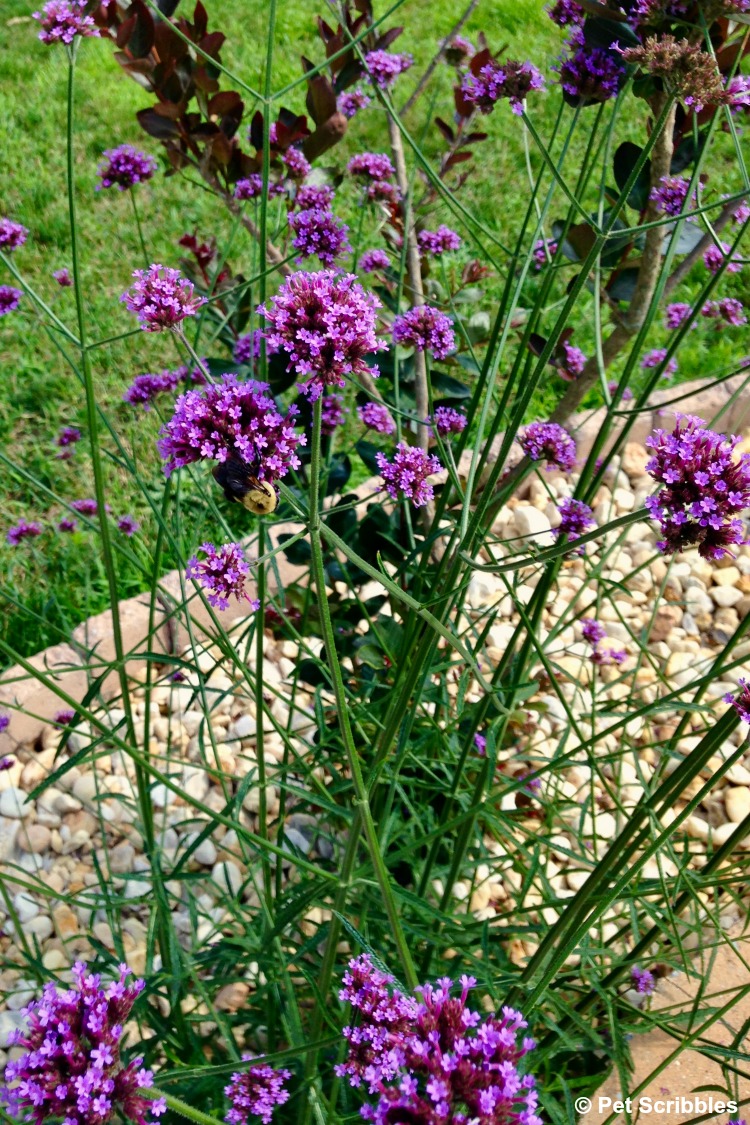
Verbena is easy to grow from seed
It’s more common to find Verbena bonariensis seeds for sale than to find plants for sale.
And it is fine to start the seed outdoors directly. You can sow the seeds in late Fall or early Spring. Just remember not to disturb the soil too much where you planted the seeds so they can germinate. (This also applies to any seeds dropped from previous year’s plants.)
The seeds can be sprinkled on top of the soil or gently raked into the soil. If planting in Fall, cover the seeds with a light layer of mulch to protect them during the Winter.
Make sure to lightly water the area (don’t wash the seeds away) and keep it moistened until the seeds germinate. If you live in an area with Winter snow and Spring rains, you probably don’t need to worry about watering. (I don’t bother watering them.)
If growing in heavy clay soil — like we have — add some organic material or compost to the soil. Verbena doesn’t usually grow that easily in heavy clay, however this year I noticed it popping up in a sopping wet, clay area that nothing else has survived in.
Can you transplant Verbena bonariensis?
Yes. Verbena transplants easily, just make sure to give it plenty of water once transplanted. If moving a small seedling, wait until the seedling grows a bit before digging it up as it needs time to establish its roots first.
Example of transplanting seedlings elsewhere
There’s an odd area right next to one of our gates to the backyard. It’s a tiny spot which remains dry unless we get rain. (The sprinklers don’t reach it.) I transplanted a few seedlings there and they are doing great!
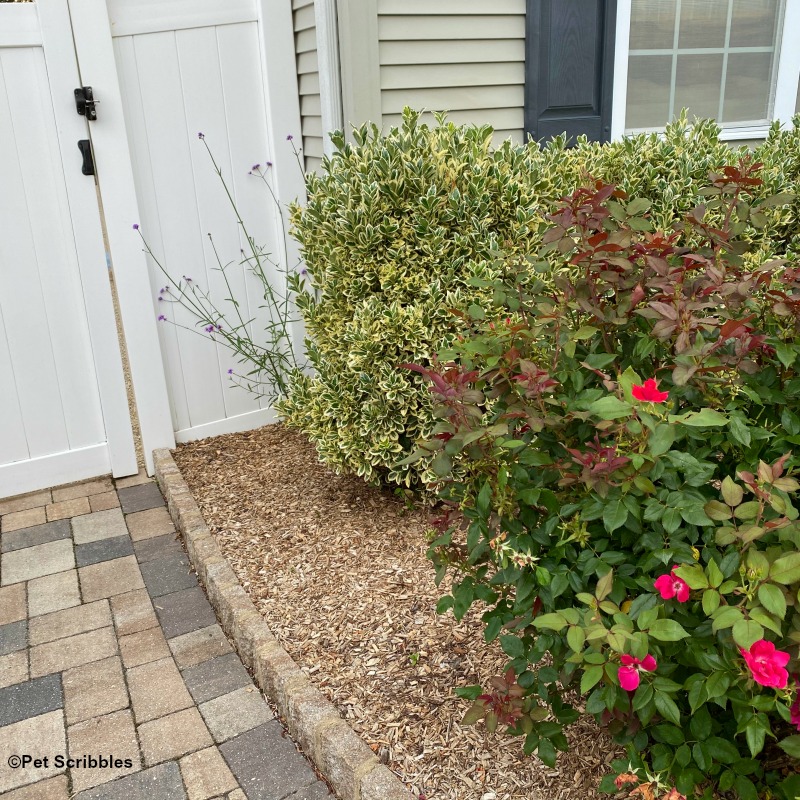
I’ve already cut it back once this season. I plan on adding more seedlings to this area, although I’m sure it will happen naturally too!
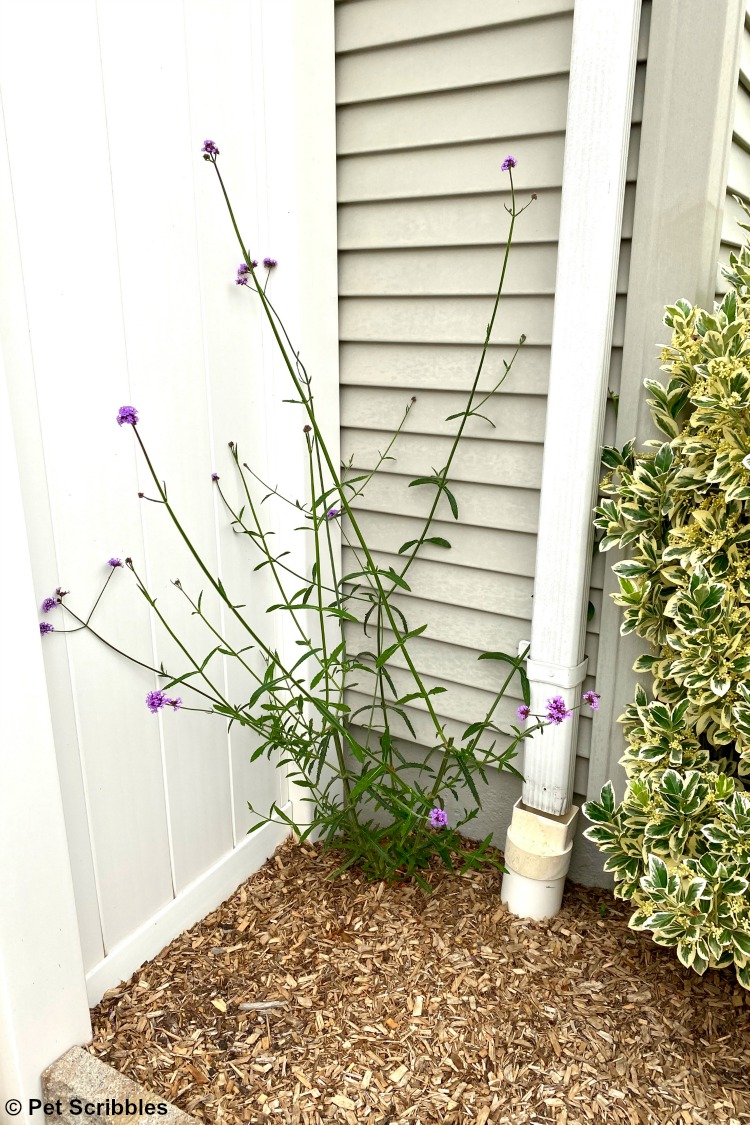
Then I can somewhat cover the lovely drain pipe!
Here is a close-up look at the base of the plants:
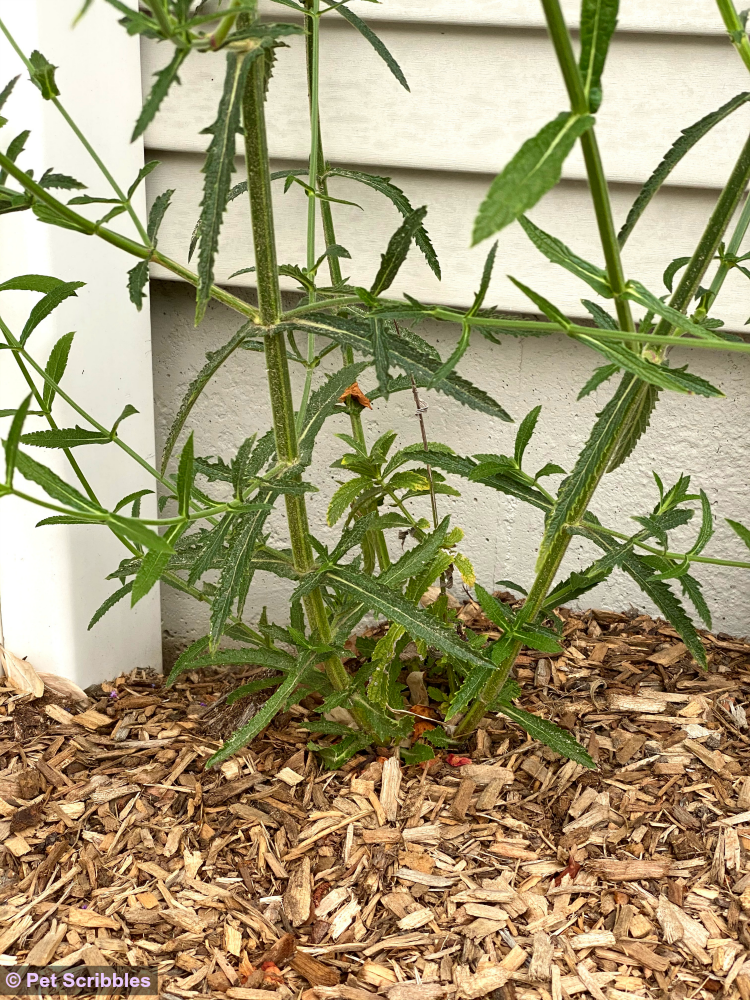
Do you have to cut back Verbena bonariensis?
You don’t have to, but it can help in a few different ways:
- If it gets too tall for your liking, simply cut the main Verbena stalk down part-way, cutting just above a spot where you see new leaves or stems growing out of the main stalk. New branches will grow out from that spot.
- You can also cut the main stalks (preventatively) in general to keep the height lower. Cut the stalks just after the beginning of their growth spurt early in the season. You can also cut them again later in the Summer.
- If you want to deadhead the spent flowers — which you don’t have to do, as they dry rather nicely — you can cut them as outlined in *1* above, cutting back the flowering stem down to where you see new leaves jutting out [from the stem]. New flowers will soon develop on those new shoots.
- In the beginning of the growing season, if you snip (or pinch) the newly growing stems shooting up from the main section of leaves near the base, the plants will stay more compact with more branching.
As you can see from the above options, you can fuss over Verbena bonariensis and cut them back or you can just let them be. Either way, they are happy and carefree plants.
Below is an example of how tall Verbena gets. The red and pink coneflowers are approximately 3 feet tall, and the Verbena stalks behind them are even taller!
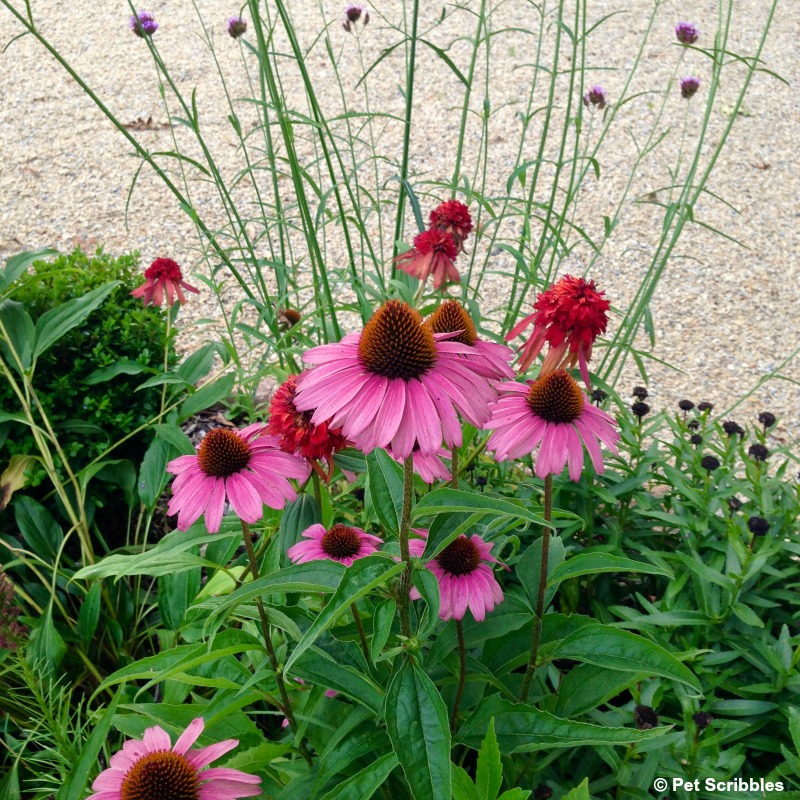
Dwarf varieties of Verbena bonariensis
Lollipop Verbena — grows only 1 to 2 feet tall at the most. The flower color is lighter than the regular (tall) variety.
Meteor Shower — a Proven Winners variety, grows only 20 to 30 inches tall. According to Proven Winners, “since the plant sets little seed, it won’t become invasive like most Verbenas of this type.”
I have not personally tried Meteor Shower, so can’t vouch for the *sets little seed* claim.
Verbena bonariensis in my gardens
Winter into Spring
I keep the plant stalks standing during the Winter season.
This helps me know where the plants will pop up the following Spring so I don’t accidentally remove them when cleaning up the beds.
I trim them down with my favorite pruners to about two feet tall in late Fall.
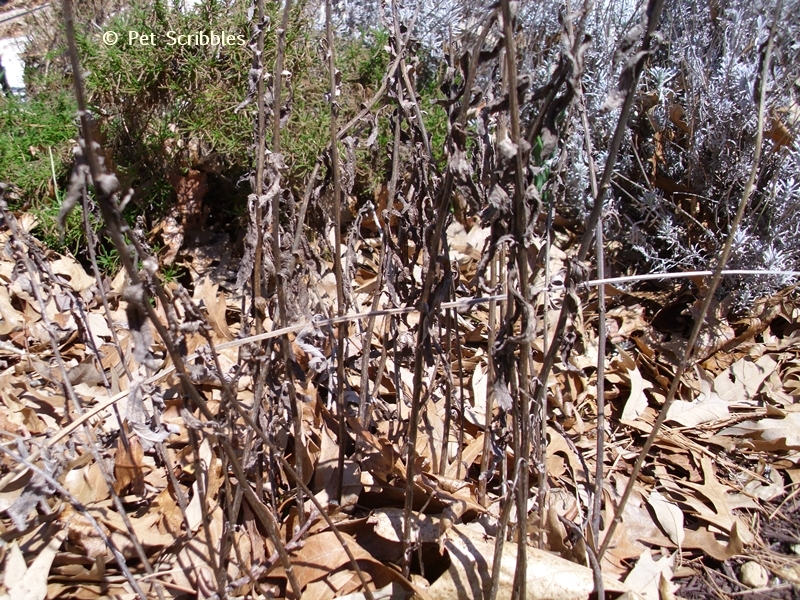
I also leave the area covered with mulch and fallen leaves.
In the Spring, I look forward to cleaning up the garden and uncovering the new plants popping up!
Here’s what I uncovered in April . . .
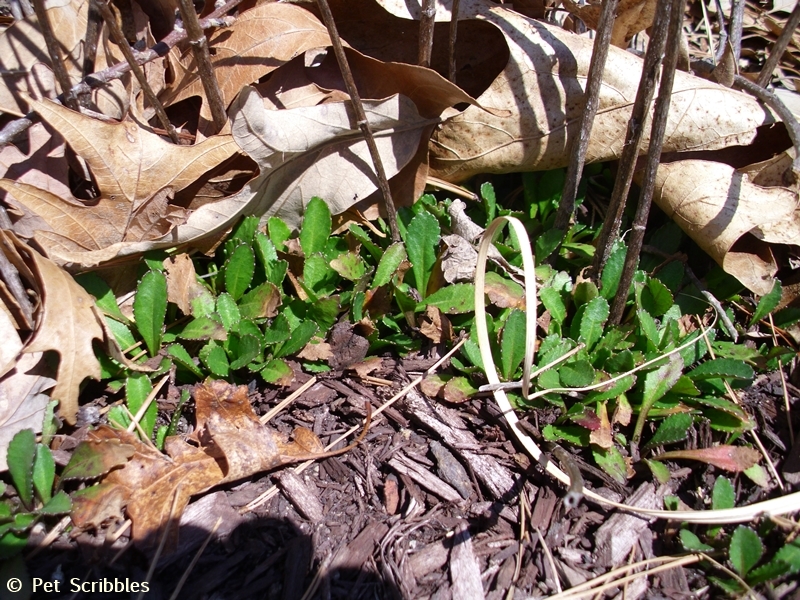
Spring into Summer
And here’s the same patch of Verbena at the end of May . . .
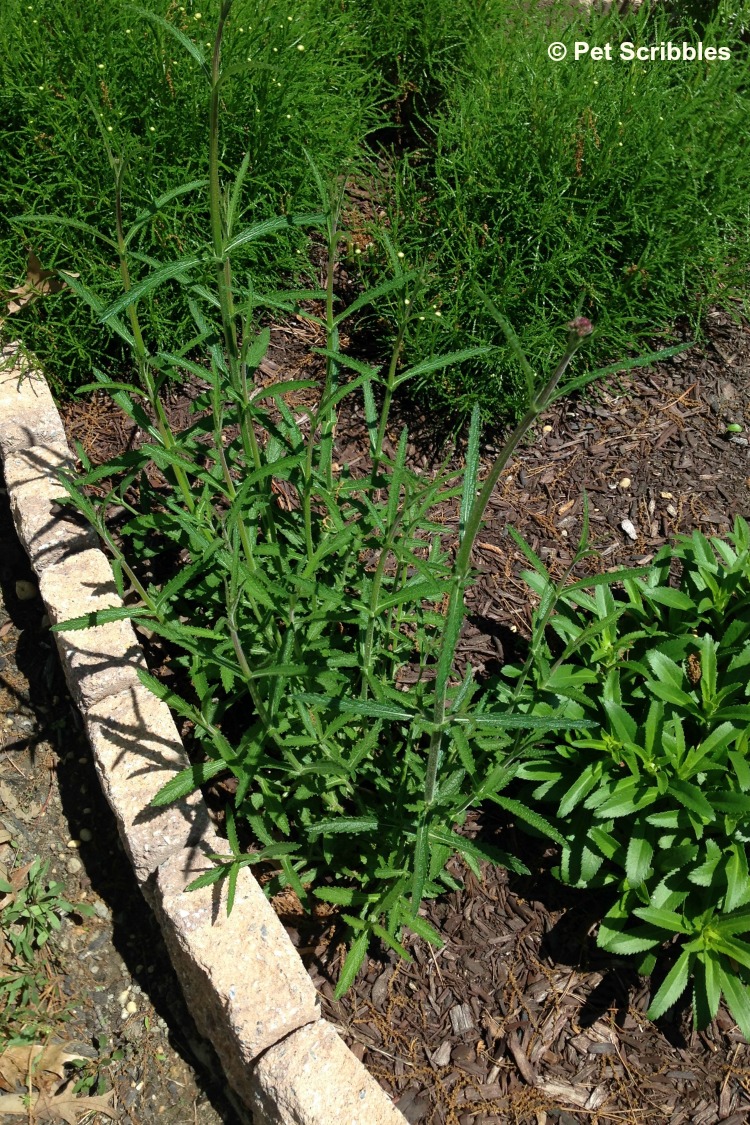
A week later, the flowers began . . .
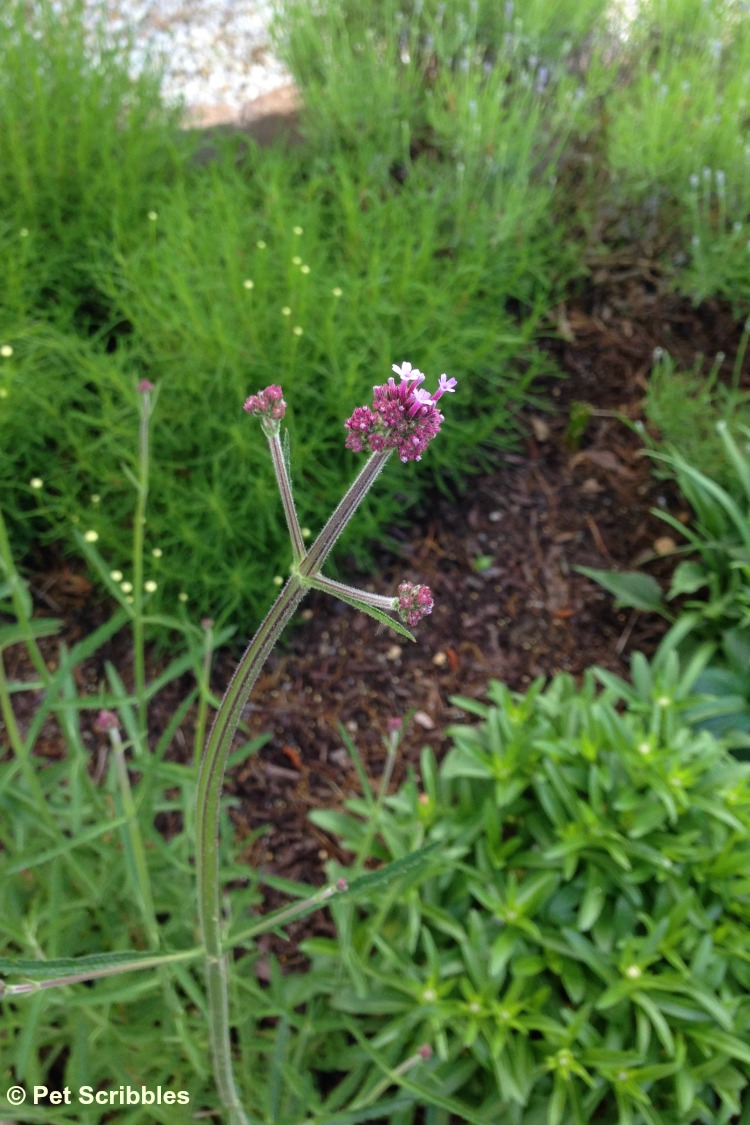
Here’s a better look at the newly flowering Verbena . . .
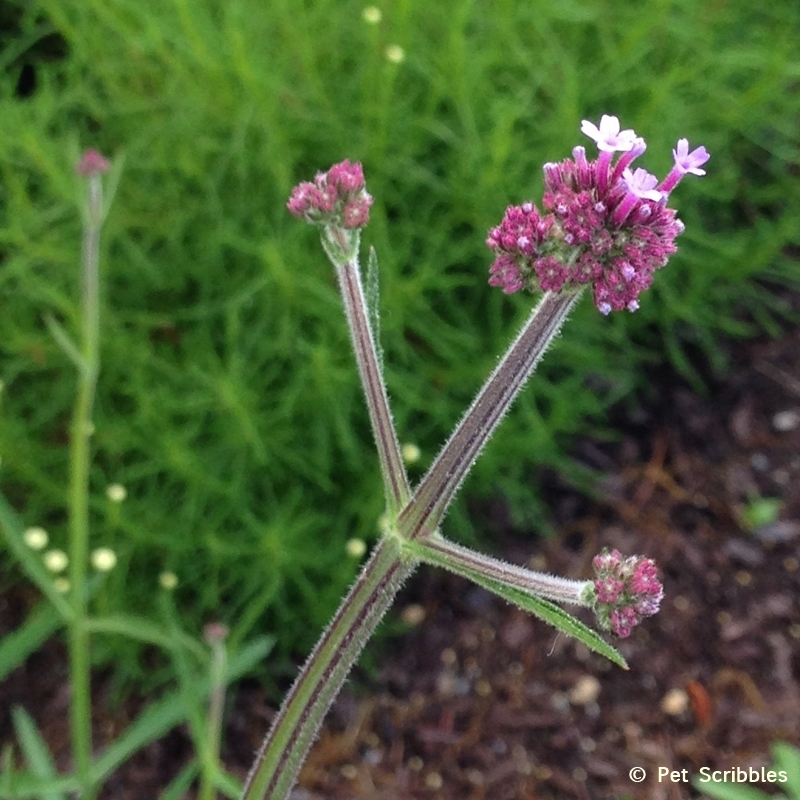
By the end of June, they were in full bloom . . .
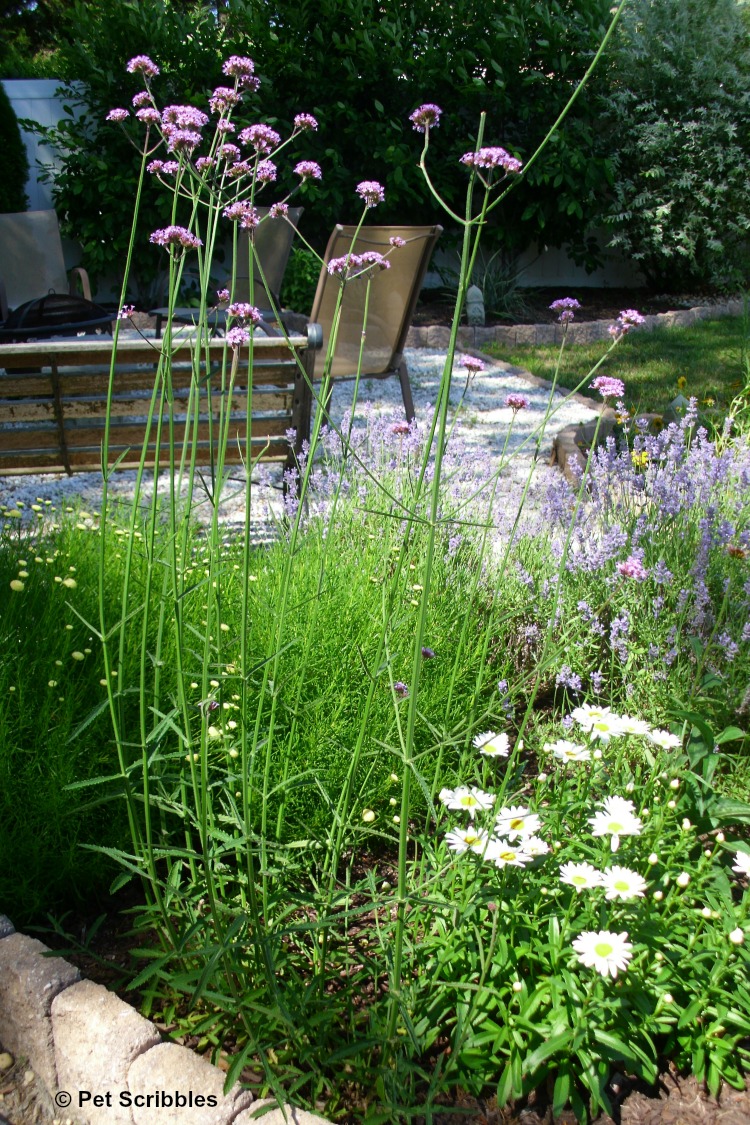
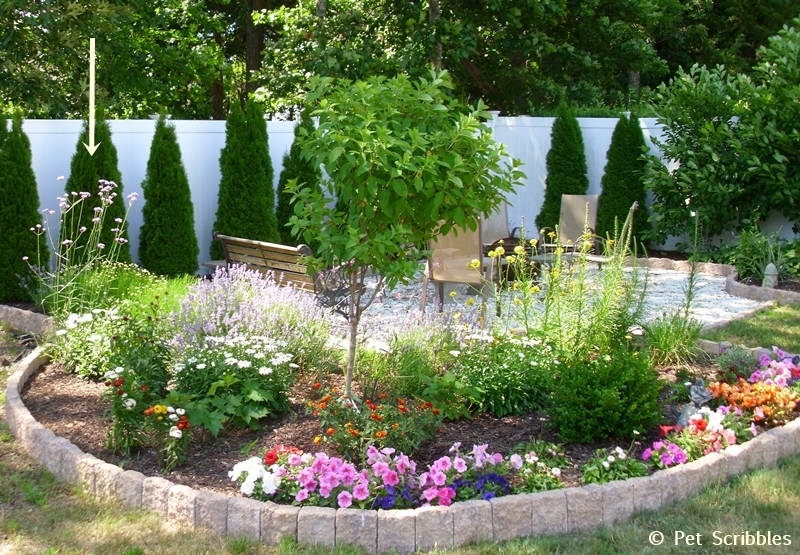
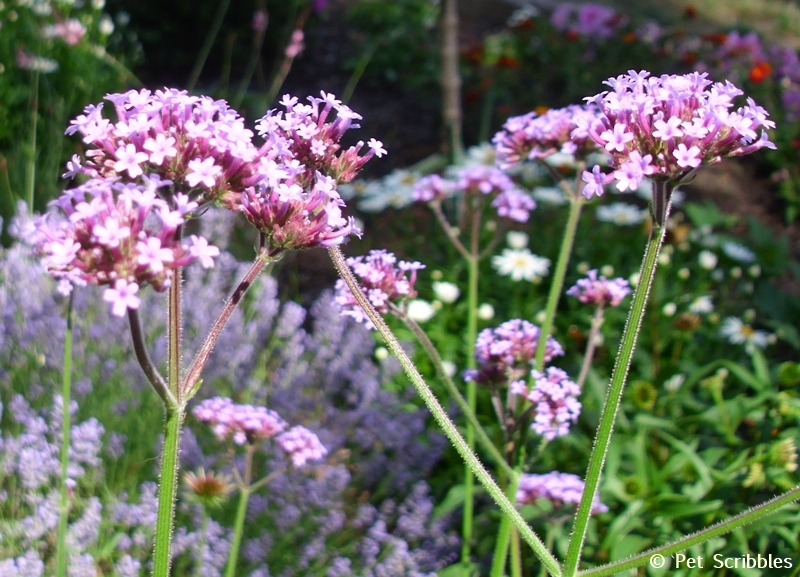
So what do you think? Is Verbena bonariensis a must-have plant for you, or are you pulling your hair out while simultaneously pulling out the seedlings popping up everywhere?
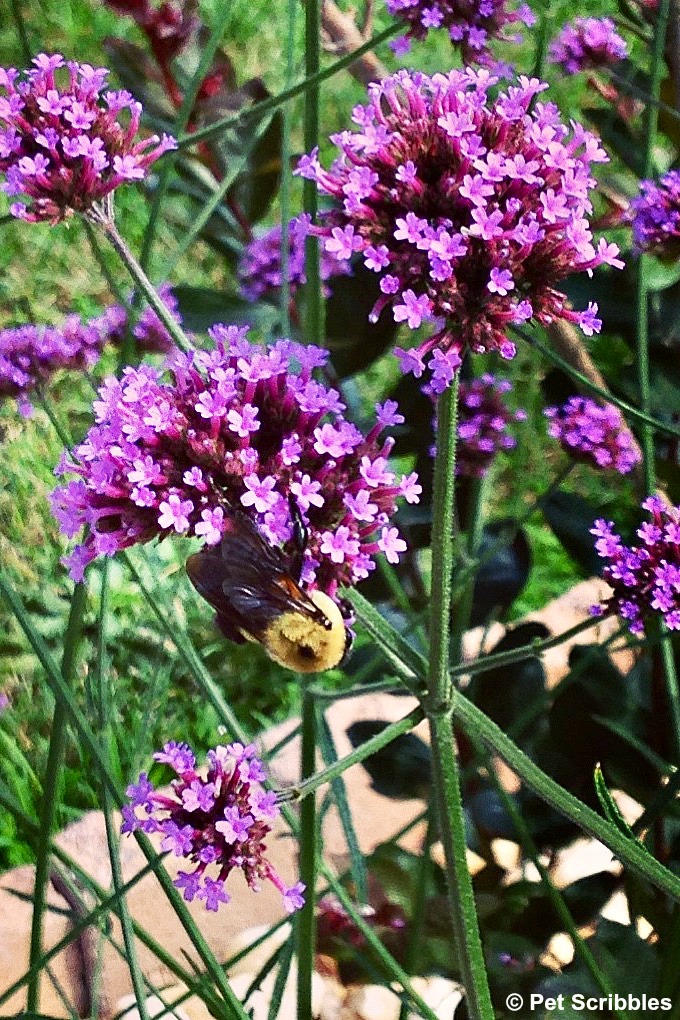
Where to buy
Below are just some of the online catalogs where you can purchase Verbena bonariensis plants and seeds.
Plants
- Bluestone Perennials (USA)
- Plant Delights Nursery (USA)
- Jacksons Nurseries (UK)
Seeds
- Johnny’s Selected Seeds (USA)
- Park Seed (USA)
- Select Seeds (USA)
- Thompson & Morgan (UK)
- Sarah Raven (UK)
Happy gardening!

Thank you so much for posting photos of the bonariensis seedlings! Especially showing a weed seedling next to them.
I had a plant last year but it did not survive our z6 climate. I let it go to seed and learned that they self seed. I have just noticed some seedlings that match your photos. They are small, the size in your photos, but the red stem and serrated leaf I have matches your photos. These were a tremendous help.👍🤞
I’m so glad to read this, Lisa! Thanks for letting me know! And yes, once I learned what the seedlings look like, I was so happy to find them and either let them grow in place or transplant them elsewhere. Free plants are always great!
Agreed! Thank you so much for the images of the babies. I had a heck of a time buying a plant and growing from seed last year. I didn’t even try this year so I’m happy to see nature do it for me.
You’re welcome Rachel! Yes, these plants are hard to find. In fact, the first year we bought one — years ago — it was actually mis-labeled and we thought we were buying a coneflower because the plants weren’t in bloom and I hadn’t learned to recognize the leaves yet. LOL Once it began blooming, I was so excited that we actually had this Verbena!
I love the structure & color of this plant & how it has adds an ethereal look to the garden. But unfortunately it is extremely invasive in my yard (West Linn, OR). We have an acre of garden, in which I have been fighting it for 10 years. After the first year it was popping up in every space in the first area I planted the original plant. In the following years, it continued to spread everywhere. Very difficult to eradicate. My eyes are always scanning for the new sprouts, knowing that one flowering plant will create a lot of future work to get it in control. My neighbor has a volunteer on the edge of her property & I warned her, haha! Just hoping the wind won’t blow it my way.
Wow Heidi, thanks for sharing, as that’s helpful to know! I can imagine it being invasive, only because even here in my garden seedlings will pop up in different spots. If this was invasive, it would drive me bonkers! It’s good you know what to look for and here’s hoping your neighbor will pluck them out of the yard right away! Thanks again for sharing!
I planted a Lollipop last year and the seedlings look more like the tall version. Do you know if this is normal? Coincidentally I live across the river from Heidi! My yard is small and the weeds have been insane this year so I’m hoping for me it’s no more annoying than another weed.
Hi Laura (I like your name!) — I haven’t ever heard of Lollipop growing as tall as the full size Verbena bonariensis. Lollipop usually stays around 24 inches tall, while Verbena gets between 3 and 6 feet tall…sometimes even taller if conditions are just right. My first guess is that you’re looking at the tall version that has popped up into your garden via birds or the wind. But of course you know where you planted the Lollipop version, so it’s very interesting they are growing much taller. Did you grow Lollipop from seed or as a young plant? If from seed, it’s possible the tall version seed was mixed into the Lollipop seed packet. Hmmmm…. If you purchased this as a young plant last year, can you contact the nursery or seller and ask if anyone else has had this happen? They could have possibly mixed up the plant tags too. (This happened to me with a panicle hydrangea, and the difference in what was labeled and sold to me versus what I had actually wanted was several feet!!!) Keep me posted if you discover anything. I’m thinking of adding Lollipop to my gardens at some point, as sometimes all of my tall Verbena is just too tall. 🙂
I bought the plant last year, the plant itself is definitely a Lollipop but there are seedlings nearby who’s leaves are larger and greener. I’m going to keep an eye on them and transplant to an area in the back in the fall.
So an update on the Lollipop seedlings, a flowering shoot is up setting buds and it does look like the Lollipop. I just needed patience.
Oh we gardeners have patience in short supply! LOL At least I know that I do. But that’s great to hear that these in fact may end up being Lollipops!